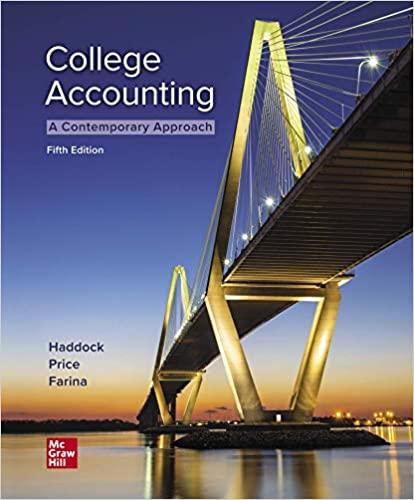Question
Concord, Ltd. manufactures shirts, which it sells to customers for embroidering with various slogans and emblems. The standard cost card for the shirts is as
Concord, Ltd. manufactures shirts, which it sells to customers for embroidering with various slogans and emblems. The standard cost card for the shirts is as follows.
| Standard Price | Standard Quantity | Standard Cost | ||||||
| Direct materials | $3 per yard | 2.00 | yards | $6.00 | ||||
| Direct labor | $14 per DLH | 0.75 | DLH | 10.50 | ||||
| Variable overhead | $3.20 per DLH | 0.75 | DLH | 2.40 | ||||
| Fixed overhead | $3 per DLH | 0.75 | DLH | 2.25 | ||||
| $21.15 |
Sandy Robison, operations manager, was reviewing the results for November when he became upset by the unfavorable variances he was seeing. In an attempt to understand what had happened, Sandy asked CFO Suzy Summers for more information. She provided the following overhead budgets, along with the actual results for November. The company purchased 82,100 yards of fabric and used 93,700 yards of fabric during the month. Fabric purchases during the month were made at $2.80 per yard. The direct labor payroll ran $460,600, with an actual hourly rate of $12.25 per direct labor hour. The annual budgets were based on the production of 601,000 shirts, using 451,000 direct labor hours. Though the budget for November was based on 45,600 shirts, the company actually produced 42,100 shirts during the month.
| Variable Overhead Budget | |||||||
| Annual Budget | Per Shirt | NovemberActual | |||||
| Indirect material | $454,000 | $1.20 | $49,300 | ||||
| Indirect labor | 295,000 | 0.75 | 31,400 | ||||
| Equipment repair | 201,000 | 0.30 | 20,100 | ||||
| Equipment power | 49,500 | 0.15 | 7,100 | ||||
| Total | $999,500 | $2.40 | $107,900 |
| Fixed Overhead Budget | |||||
| Annual Budget | NovemberActual | ||||
| Supervisory salaries | $265,000 | $21,500 | |||
| Insurance | 348,000 | 27,600 | |||
| Property taxes | 85,000 | 6,900 | |||
| Depreciation | 325,000 | 26,000 | |||
| Utilities | 210,000 | 20,200 | |||
| Quality inspection | 276,000 | 24,600 | |||
| Total | $1,509,000 | $126,800 |
(a) Calculate the direct materials price and quantity variances for November. (If variance is zero, select "Not Applicable" and enter 0 for the amounts.)
| Direct material price variance | $enter the direct material price variance in dollars | select an option FavorableNot ApplicableUnfavorable |
|---|---|---|
| Direct material quantity variance | $enter the direct material quantity variance in dollars | select an option UnfavorableFavorableNot Applicable |
(b) Calculate the direct labor rate and efficiency variances for November. (Round answers to 0 decimal places, e.g. 125. If variance is zero, select "Not Applicable" and enter 0 for the amounts.)
| Direct labor rate variance | $enter the direct labor rate variance in dollars | select an option FavorableUnfavorableNot Applicable |
|---|---|---|
| Direct labor efficiency variance | $enter the direct labor efficiency variance in dollars | select an option UnfavorableNot ApplicableFavorable |
(c) Calculate the variable overhead spending and efficiency variances for November. (Round answers to 0 decimal places, e.g. 125. If variance is zero, select "Not Applicable" and enter 0 for the amounts.)
| Variable overhead spending variance | $enter the variable overhead spending variance in dollars | select an option Not ApplicableFavorableUnfavorable |
|---|---|---|
| Variable overhead efficiency variance | $enter the variable overhead efficiency variance in dollars | select an option Not ApplicableUnfavorableFavorable |
(d) Calculate the fixed overhead spending variance for November. (Round answer to 0 decimal places, e.g. 125. If variance is zero, select "Not Applicable" and enter 0 for the amounts.)
| Fixed overhead spending variance | $enter the fixed overhead spending variance in dollars | select an option FavorableUnfavorableNot Applicable |
eTextbook and Media
Step by Step Solution
There are 3 Steps involved in it
Step: 1

Get Instant Access to Expert-Tailored Solutions
See step-by-step solutions with expert insights and AI powered tools for academic success
Step: 2

Step: 3

Ace Your Homework with AI
Get the answers you need in no time with our AI-driven, step-by-step assistance
Get Started


